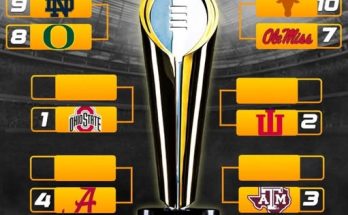The ‘Scheduling Conflict’ nickname of Caitlin Clark resurfaces amid news of a fever show.
Caitlin Clark’s rise in the WNBA has been nothing short of extraordinary. From dominating college basketball to making an immediate impact in the professional ranks, Clark has captured the attention of fans, analysts, and players alike. Her influence is undeniable—both on and off the court. As she continues to break records and elevate the game, her effect on the WNBA is far-reaching, reshaping the league’s operations and culture. A key example of her influence is the increasing frequency of “scheduling conflicts” among teams, leading to arena changes and shifts in scheduling. These so-called “conflicts” are often attributed to the overwhelming demand for tickets and media attention when Clark’s team, the Indiana Fever, plays.
“Scheduling Conflict” – A Lighthearted Yet Significant Term
The term “scheduling conflict” has become synonymous with Caitlin Clark, thanks to the WNBA teams’ frequent adjustments to their schedules. While the term is often used in a lighthearted and humorous manner by fans, there is a deeper underlying truth: these venue changes are driven by the massive interest surrounding Clark and her team.
Clark’s presence on the court brings in large crowds, and this interest is reflected in the increased revenue generated by her games. Fans and analysts alike have taken note of how many times the phrase “scheduling conflict” has been invoked, leading to jokes that Clark, by simply being on the court, has become a source of scheduling headaches for arena managers.
For example, the Atlanta Dream recently moved their home opener against the Fever to the much larger State Farm Arena, a venue that can seat more than 17,000 people, instead of their regular Gateway Center Arena, which can only hold 3,500. The official reasoning given was a “scheduling conflict,” but many fans felt it was no coincidence that this change coincided with the Fever’s high-profile visit due to Caitlin Clark’s status. Similarly, the Dallas Wings made a similar move, transferring their June 27 matchup with the Fever from the College Park Center to the American Airlines Center, which can accommodate over 20,000 fans. Both moves reflect a desire to accommodate the swelling number of people eager to watch Clark, with many joking that the real “conflict” isn’t about scheduling—it’s about whether or not the smaller venues can keep up with Clark’s newfound popularity.
This phenomenon is not just an amusing quirk of the WNBA’s scheduling process; it has profound implications for the league as a whole, as it underscores Clark’s importance and the rapidly growing interest in women’s basketball. The humorous nickname, “Scheduling Conflict,” captures the essence of a significant shift within the sports world—a shift driven by an athlete whose star power transcends the traditional boundaries of the game.
The Ripple Effect of Clark’s Popularity
Caitlin Clark’s influence extends far beyond her on-court prowess. As a player, she is known for her scoring ability, her vision, and her knack for taking over games in the clutch. But it is her larger-than-life personality and her ability to captivate audiences that have made her a household name. In addition to her performance on the court, Clark has become a cultural icon. Her presence in the WNBA has led to significant economic growth for the league and for the Indiana Fever specifically, a team that has traditionally struggled to garner national attention.
Clark’s arrival in the WNBA, combined with her exceptional play and electrifying performances, has turned the Fever into one of the league’s most compelling stories. It’s not just her on-court success that has generated buzz; it’s the ripple effect she’s had on every aspect of the franchise. From increased attendance to better ticket sales and sponsorships, Clark’s arrival has led to a significant boost in consumer spending—approximately $82.5 million, according to reports. The Fever are benefiting immensely from this newfound spotlight, and it is clear that Clark has played a central role in this.
As the Fever’s popularity continues to surge, other teams have begun to recognize the potential for increased revenue through Clark’s games. The WNBA, as a whole, has seen a marked increase in viewership and media exposure, with Clark being a key driver of this attention. Teams are now adjusting their game schedules and venues, shifting to larger arenas to accommodate the growing number of fans who want to see Clark and the Fever play. The shift from small arenas to larger venues, along with the “scheduling conflict” debacles, is just one of the many ways Clark’s impact is being felt across the league.
The Indiana Fever’s Response to the Growth
The Indiana Fever have not only embraced the changes Clark’s presence has brought, but they have also made significant investments in the future of the team. In light of the increased fan demand, the Fever have announced a plan to build a state-of-the-art sports performance center. This new facility, which is set to open before the 2027 season, will be a hub for both player development and fan engagement. The $78 million project is a direct response to the growing popularity of the Fever and their star player.
The sports performance center will feature two regulation-sized courts, advanced strength and conditioning areas, and wellness facilities, ensuring that the team can provide the best possible environment for their athletes. The center will also serve as a gathering place for the community, offering a space for fans to connect with the team and experience the Fever’s commitment to excellence. The decision to invest in such a facility is a clear signal of the Fever’s dedication to maximizing the potential of their growing fanbase, as well as providing players like Caitlin Clark with the resources they need to continue their success.
The Broader Impact on the WNBA
The ripple effects of Caitlin Clark’s impact are not confined to the Fever alone. Her success has sparked a broader conversation about the future of the WNBA and its potential for growth. Clark’s meteoric rise is a clear sign that women’s basketball is entering a new era—one where athletes are receiving the recognition and support they deserve.
Teams across the league are taking notice of the increased revenue and fan engagement that Clark brings, and many are looking to replicate the Fever’s success. The league is seeing increased attendance, higher media rights deals, and a growing sponsorship portfolio, all of which are fueling the WNBA’s expansion. More and more, women’s sports are gaining traction in mainstream media, and Clark is at the center of this movement. Her success is a testament to the power of female athletes in reshaping sports culture, pushing for visibility, and inspiring the next generation of basketball players.
Fan Reactions and Engagement
Fans have embraced Clark’s rise to stardom, not only because of her exceptional skills but also because of her relatable personality and her engagement with the community. Social media platforms are filled with memes, comments, and discussions about the “Scheduling Conflict” phenomenon, with fans humorously celebrating the growing demand for her games. This interaction between fans and the WNBA is crucial for the league’s continued growth, and it’s clear that Clark’s influence extends beyond her on-court performance.
The excitement around Clark has created a sense of community among fans, uniting them around a common cause—celebrating the success and growth of women’s basketball. It’s also fostering a sense of pride in the sport, as fans witness firsthand the transformative impact of players like Clark on the game they love. The nickname “Scheduling Conflict” has only added to this sense of shared enjoyment, as fans continue to find humor in the fact that the WNBA is struggling to accommodate the overwhelming demand for Clark’s games.
Looking to the Future
As the 2025 WNBA season approaches, all eyes are on Caitlin Clark and the Indiana Fever. The franchise’s new sports performance center, along with the continued trend of moving games to larger venues, is a sign that the Fever are serious about sustaining their success and maintaining their newfound prominence in the league. With Clark leading the charge, the team is poised for greatness both on and off the court.
The growing interest in the WNBA, spurred by players like Clark, is a testament to the changing dynamics of women’s sports. The rise of women’s basketball is not just about showcasing athleticism—it’s about celebrating the powerful voices of female athletes who are breaking barriers and changing perceptions. Caitlin Clark, with her combination of talent, charisma, and cultural impact, is at the forefront of this transformation.
Looking ahead, the future of the WNBA looks incredibly bright. The league is set to experience continued growth, and with players like Caitlin Clark leading the way, there’s no telling just how far women’s basketball can go. The “Scheduling Conflict” may have started as a joke, but it has become a symbol of the growing influence and reach of women’s sports, and Caitlin Clark is undeniably a key player in this historic shift.
As we look toward the future, it is clear that Caitlin Clark is not just changing the game—she’s helping to redefine what it means to be a sports superstar in the modern era. With each game she plays, the WNBA grows stronger, and the world of women’s sports becomes more and more impossible to ignore.



